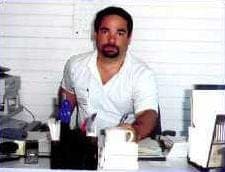
-----
Who Needs Adhesion, I Need Coating Release
I have meet with a rather bothersome problem. Presently I am working to characterize mechanical properties of novel electrochemically deposited materials. At the immediate time, I am working with copper. The particular chemistry that I am employing manipulates the grain refinement of the material.
My dilemma is that, further testing requires that my films be free standing. I have produced adherent copper on copper materials samples and disengaging coatings on nickel substrate that exhibit zero strain failure that is inconsistent with the expected nature of the material. I have also used an electrolytic silver electrolyte as a seed layer to act as a barrier between the copper substrate and copper deposit.
Unfortunately, the silver layer in discontinuous on the micron level and etching of the copper sample results during chemical removal of the substrate.
To make a short story sweet, I am looking for a technique to deposit a two micron or less thick homogenous copper layer from a sulphate solution on any given substrate (that is to say any substrate you think meets this task) that will show some degree of adherence but can be removed as a continuous film. The removal process may be mechanical, i.e., peeling or chemical, i.e., back etching. I sincerely thank you for your time.
- Raleigh, North Carolina
2000
1 of 3 simultaneous responses
First, passivate a stainless steel plate (HNO3 dip works well), then plate your copper onto the stainless steel. You can peel the copper foil from the steel plate easily. I've done this for thicker films (25 micron), but I've never tried much thinner. Should work with care.

James Totter, CEF
- Tallahassee, Florida
2 of 3 simultaneous responses
Greg, I think I understand your problem(I think). Without ever trying it myself, I would think a stainless foil that was properly passivated would give you the results you are looking for. It would provide a conductive surface for the copper to deposit directly from the sulphate based bath and not adhere to any great degree. My choice would be either 304 or 316. I'm sure someone has probably tried this in the past.

Jim Conner
Mabank, Texas USA
3 of 3 simultaneous responses
Try passivated stainless steel coupons. Do not activate, just plate. Peeling off should not be an excessive problem if the coupons are fairly small. A two micron sheet of copper can not be expected to have a large amount of strength.
- Navarre, Florida
Q, A, or Comment on THIS thread -or- Start a NEW Thread